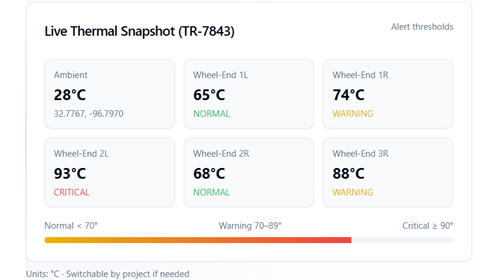
/
October 6, 2023
/
#
Min Read
Service-Oriented Vehicle Diagnostics
The advent of groundbreaking technologies and cutting-edge solutions is driving the automotive industry through a significant transformation. One such concept is Service-Oriented Vehicle Diagnostics (SOVD) which aims to revolutionize the way vehicle diagnostics are performed and bring about improved efficiency, reduced costs, and enhanced customer experiences. Let’s unpick the concept of SOVD and explore its impact on the automotive industry.
The Essence of Service-Oriented Vehicle Diagnostics
Traditional automotive diagnostics are proximity-based, focus on electronic control units (ECUs), and rely heavily on unified diagnostic services (UDS) protocol. While this method proved sufficient in the past, as vehicles become increasingly software-defined with new architectures based on High-Performance Computers (HPCs), this static approach will fall short. This is because a UDS approach is ill-equipped to handle the vast amount of data generated by software-based systems, which are exceedingly complex and can contain different software versions across different vehicle makes, models, and even units.
To address the deficiencies of traditional methods, the Association for Standardization of Automation and Measuring Systems (ASAM) initiated a standardized approach to vehicle diagnostics, otherwise known as the "Service-Oriented Vehicle Diagnostics" or SOVD project. SOVD leverages a single API for the seamless exchange of diagnostic information between vehicle components and diagnostic tools. This standard provides uniform access to the diagnostic content of traditional ECUs, as well as HPCs and their related applications, thereby ensuring interoperability and universal compatibility.
How SOVD Works
Modern vehicles are becoming increasingly complex with an array of sensors and communication modules, HPC-based architectures, multiple operating systems, and a plethora of ever-changing software versions and third-party applications – all of which complicate fault identification and diagnosis.
SOVD was designed to leverage and work alongside existing technologies to simplify vehicle diagnostics; such as taking an HTTP REST-based approach to data transfer that emphasizes scalability, simplicity, and interoperability. In addition to HTTP REST, SOVD uses JavaScript Object Notation (JSON) for encoding transmitted data, OpenAPI for API definition and vehicle diagnostic capabilities, and OpenID Connect and OAuth 2.0 for authentication and authorization.
This robust combination of technologies and approaches eliminates diagnostic tool-related complexity as well as the need for proprietary automotive stacks on the client side. This enables the use of generic diagnostic tools on all SOVD-equipped vehicles while supporting capability discovery, reading/deletion of fault entries, reading/writing of data resources and configurations, operations control, software updates, bulk data handling, and data logging access.
Service-Oriented Vehicle Diagnostics Benefits
One of the most significant benefits of SOVD is that it promotes standardization across different vehicle manufacturers, enabling diagnostic tools to communicate seamlessly with vehicles from various brands. This interoperability eliminates the need for multiple diagnostic tools, thereby reducing complexity and enhancing efficiency. Additionally, it supports remote, proximity, and in-vehicle diagnostic access to enable a wide range of use cases.
Remote Software-Oriented Vehicle Diagnostics
While traditional diagnostic methods supported proximity and in-vehicle diagnostics, SOVD is unique in its ability to support remote or over-the-air (OTA) diagnostic access. This approach often leverages cloud-based services such as fleet management or data logging agents. It enables use cases including but not limited to information retrieval and system status verification, remote troubleshooting and activation of vehicle features, and updates to software and firmware.
With OTA technology, manufacturers can use SOVD to monitor vehicle health, including detecting and addressing problems before they become critical issues or recalls. Through information retrieval and status checks, SOVD can help original equipment manufacturers (OEMs) predict when specific components or systems will likely fail. This allows them to notify owners of necessary maintenance and repairs proactively. Alternatively, when these faults are software-related, automakers can use the SOVD standard to support the deployment of remote updates and bug fixes, thereby enhancing safety and extending the lifespan of vehicle components.
Proximity Software-Oriented Vehicle Diagnostics
For proximity use cases a technician or worker connects to the vehicle either through a direct connection or wirelessly. Proximity diagnostics are excellent for troubleshooting potential issues, performing functional checks and tests (including technical inspections, emissions testing, and end-of-line compliance testing), and software and firmware updates and configurations.
Since SOVD supports access to HPC logging information, it enables a wide range of data-related benefits, especially when used in conjunction with cloud-based data-logging devices. Automakers can use the SOVD approach to access data – everything from battery cell performance to tire pressure and fuel consumption to brake usage and weather – and relay this information to a central server with their data logging software. Transferred data can then be processed using sophisticated algorithms and machine learning models that identify patterns, anomalies, and issues – many of which can be corrected with a SOVD-supported software or firmware update. This needs-based approach reduces breakdowns resulting in fewer scrapped vehicles and increased functional efficiency.
In-Vehicle SOVD
In-vehicle use cases for SOVD are unique in that they automatically run within the vehicle regardless of whether the vehicle has a connection to a remote server or diagnostic device. Predictive maintenance and data monitoring (such as periodic system or vehicle status collection) are some of the primary use cases for in-vehicle SOVD.
Using SOVD for predictive maintenance allows automakers to proactively identify vehicle and component needs. As a result, they can address issues sooner to reduce the amount of time vehicles spend in the shop for unexpected repairs and minimize downtime for fleet-based businesses. Moreover, it reduces costs by streamlining diagnostic processes, decreasing labor expenditures associated with manual inspections, and minimizing the need for physical dealer visits.
Changing the Automotive Industry
Service-Oriented Vehicle Diagnostics is revolutionizing the automotive industry by providing a standardized, efficient, and cost-effective approach to vehicle diagnostics. With its emphasis on interoperability, enhanced efficiency, and improved customer experiences, SOVD is helping change the way vehicles are diagnosed and maintained. Taking a SOVD approach allows automakers to address all areas of the vehicle lifecycle, from development to post-production and decommissioning. As the automotive industry continues to evolve, the adoption of SOVD will play a crucial role in ensuring seamless connectivity, increased productivity, and enhanced vehicle reliability.
To learn more about how Sibros’ Deep Connected Platform can support SOVD in your fleet, contact us today.










